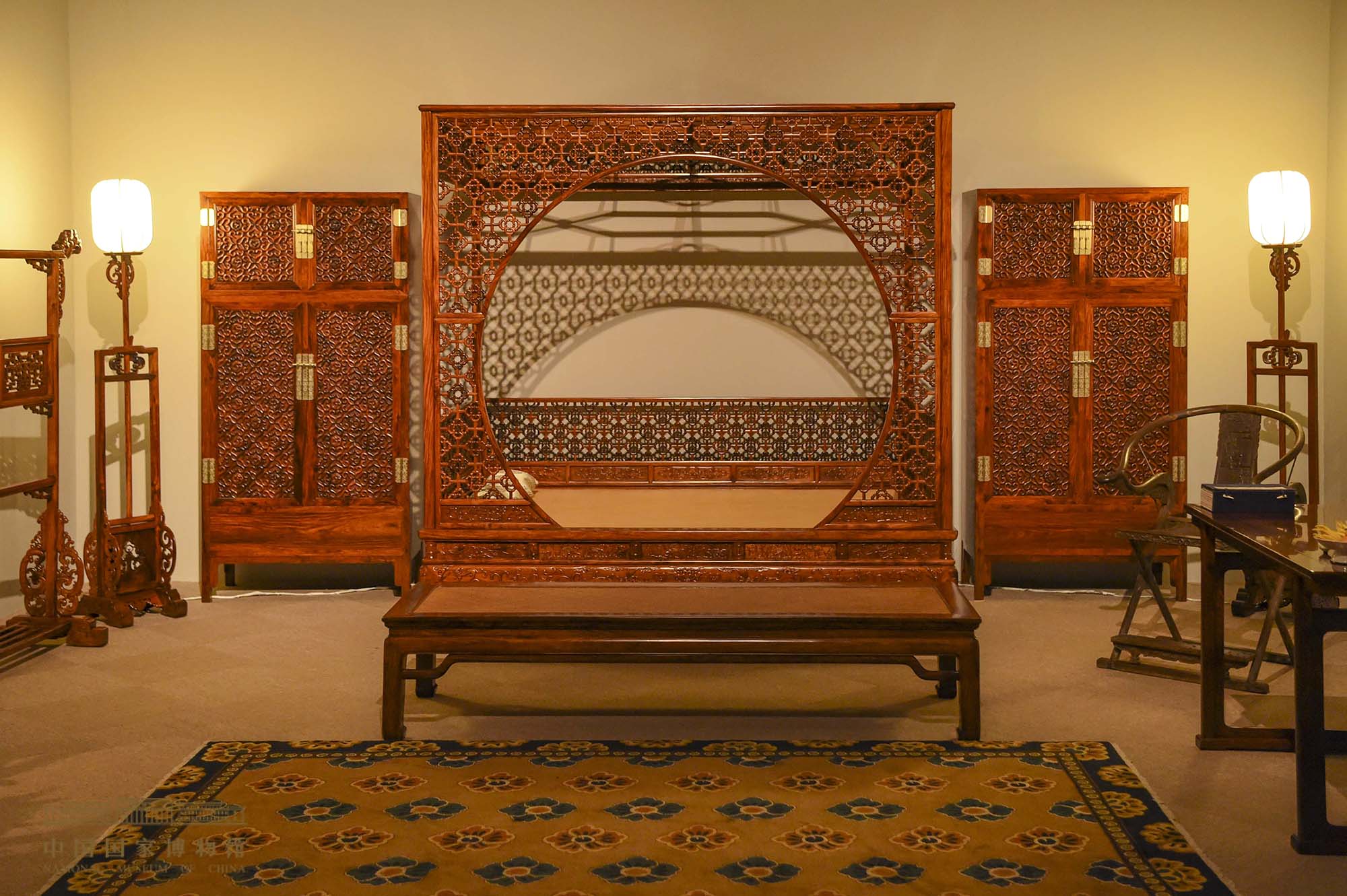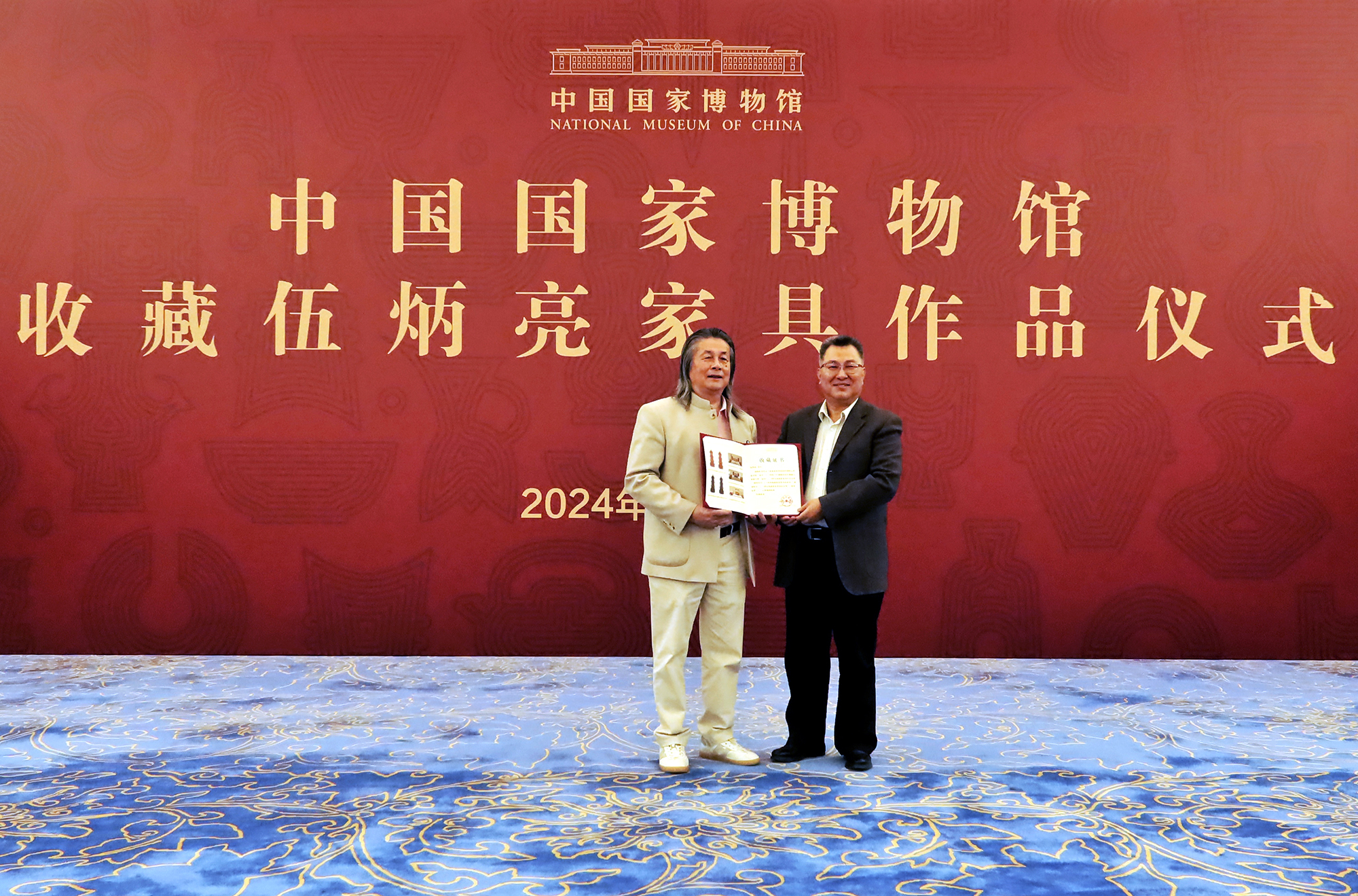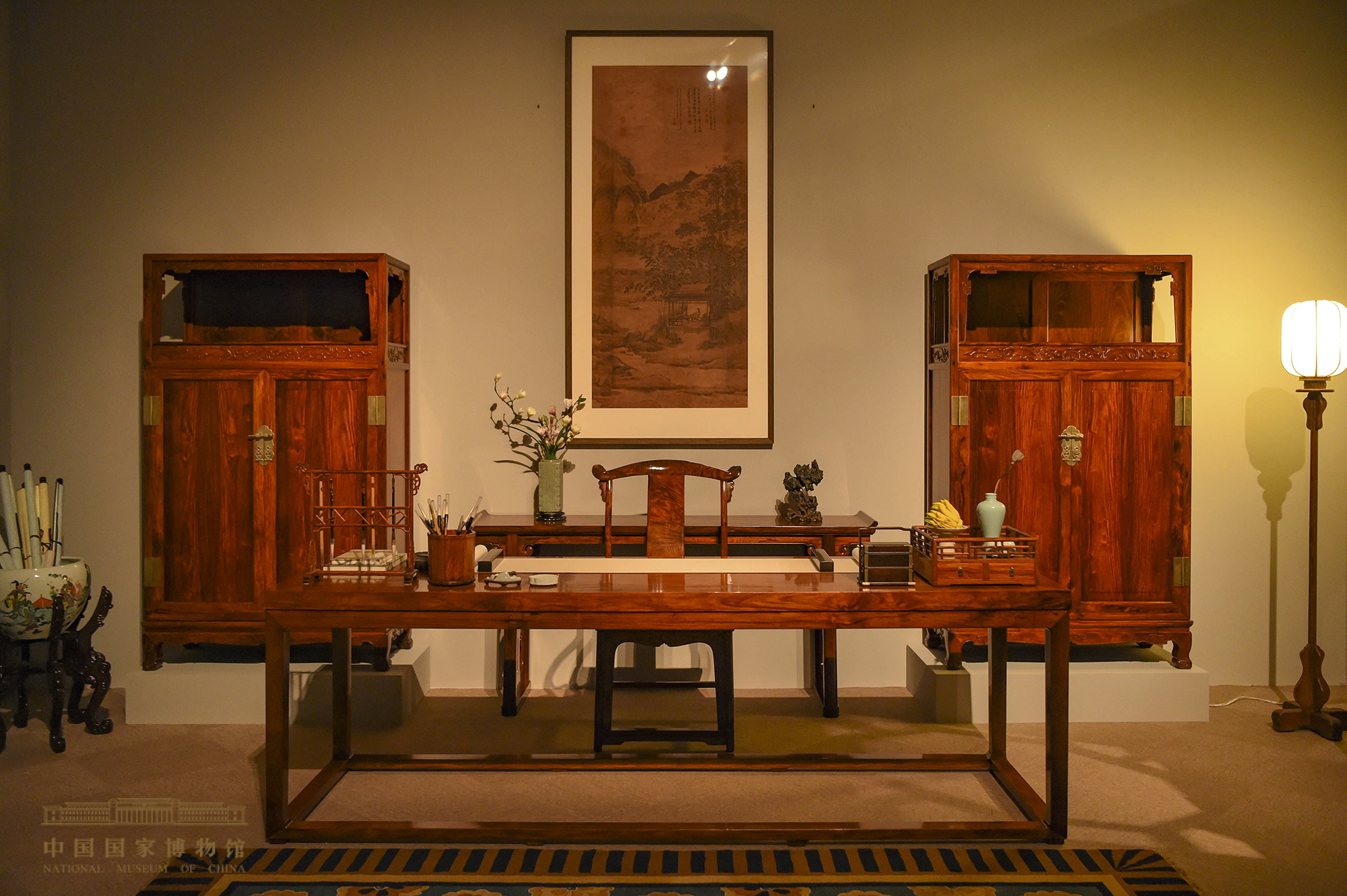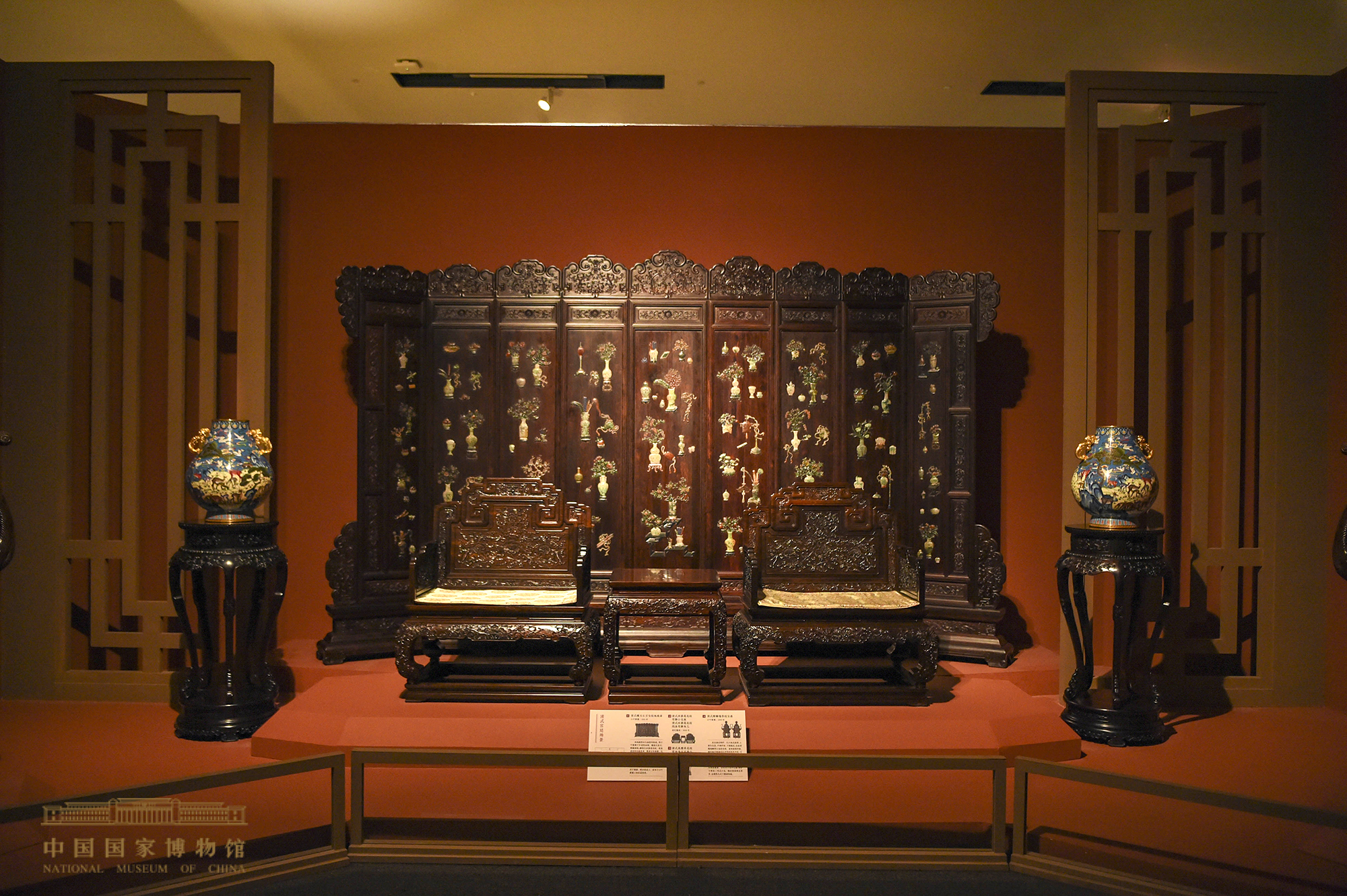A seasoned craftsman's 'fever' for classical furniture produces pieces of timeless elegance, Lin Qi reports.

Wu Bingliang, a furniture collector and master woodworker, compares his relationship with classical Chinese furniture, which he has had from the late 1970s, to a kind of obsession.
"I have a high fever for classical furniture. I've had it for years," says the man in his 60s.
Born in Guangdong province, where furniture has been produced for centuries, Wu has risen from being a minor figure in the trade to a leading craftsman involved in the revival of antique Chinese furniture. His timeless, elegant pieces, highly sought after by furniture lovers, have been added to both public and private collections of importance. He also has a museum named after him that displays objects he has made over the past four decades.
Wu recently made a donation to the National Museum of China of pieces that encapsulate his masterful technique and discernment.
They included two pairs of seven-tired pagodas, modeled after the ones that were once at the Forbidden City, as well as three miniature sets of furniture for the study, bedroom and meeting hall that illustrate the basic arrangements of Chinese furniture in daily life.

An exhibition celebrating Wu's commitment to classical furniture over the years, Inheriting the Tradition With Craftsmanship, is also being held at the National Museum of China.
Classical Chinese furniture is a three-dimensional expression of underlying values that favor simplicity over extravagance, its lines and curves highlighting the quality and texture of the wood used.
Traditional furniture has been vividly depicted in some of the art collected by museums, such as the 10th-century painting Night Revels of Han Xizai, which is part of the collection of the Palace Museum, in which the beds, chairs, tables and screens are varied in both type and grace.
Ming-style furniture that was popular throughout both the Ming (1368-1644) and the Qing (1644-1911) dynasties is seen as the pinnacle of artistry and furniture workmanship. Its minimalist beauty is grounded in the close collaboration between intellectuals and craftsmen, which lent a sophisticated, scholarly taste to its shapes. Another characteristic is its widespread use of sunmao, the mortise-and-tenon joints used in Chinese architecture to connect without the use of glue or nails.
Additionally, the fragrance of the precious hardwoods used, such as huanghuali (a variety of rosewood) and zitan (red sandalwood), as well as their natural depth, adds to the beauty of Ming-style furniture, fine and rare pieces of which are sought after by collectors.

Wu has been making Ming-style furniture for over four decades, rejuvenating the tradition subtly both in terms of function and appearance.
Until the publication of several books by Wang Shixiang (1914-2009) in the 1980s on connoisseurship in Ming and Qing furniture, Wu had been a buyer and seller of vintage furniture. Caught up in the wider enthusiasm for the style that the books created both in and out of China, he began to study and collect pieces, eventually coming to focus on the revival of Ming-style furniture.
Over time, Wu has developed principles that have also become industry standards.
He says that he emphasizes structural beauty and that a good piece of furniture should have a silhouette or profile that first catches the attention from afar and then on closer inspection, evokes a warm response.
Wu says that superb craftsmanship is required to achieve this, itself the result of experience and a deep desire for precision. He adds that it is also necessary for the maker to be knowledgeable about hardwood — its qualities, grain and texture — so they can choose the kind of furniture that is best suited to each variety.
"Ultimately, a furniture maker should be able to create pieces with impeccable proportions that soothe the mind and soul of those who use them."

Wu is committed to making furniture that not only stands the test of time but also passes on the culture of classical furniture to the younger generation.
At the exhibition at the National Museum of China, he has re-created spaces, in which full-size sets of furniture are grouped to conjure up a variety of moods: the zhongtang (middle hall), where desks and chairs are placed symmetrically to suggest dignity and the significance of etiquette; furniture for a scholar's study that illustrates the aesthetics of intellectuals; and furniture for a bedroom that soothes both body and heart.
"Every piece on show has soul and vitality, and walking among them allows one to navigate the width and scope of Chinese furniture, and the culture it embodies," Wu says.
Zhao Danping, the exhibition's curator, says that the pieces embody the concepts ancient Chinese had about themselves and the spaces in which they were living — the philosophy of the perfect lifestyle — which is a significant part of the Chinese cultural tradition.
"It gives a full expression of the spirit of craftsmanship," Zhao says. "And at the same time, the belief in dao fa ziran, that is, to learn from the rules of nature, and set them as the guidelines of human behavior," Zhao says.
Contact the writer at linqi@chinadaily.com.cn


